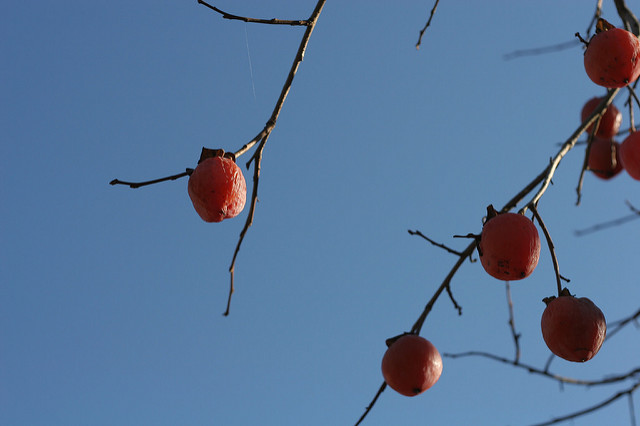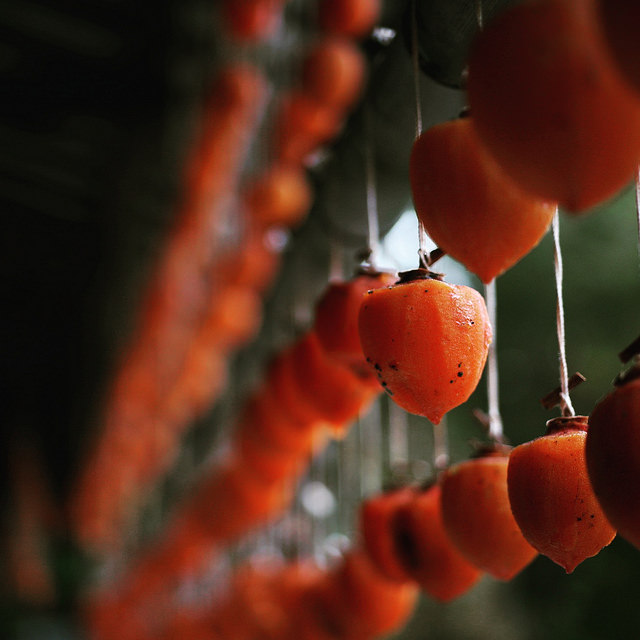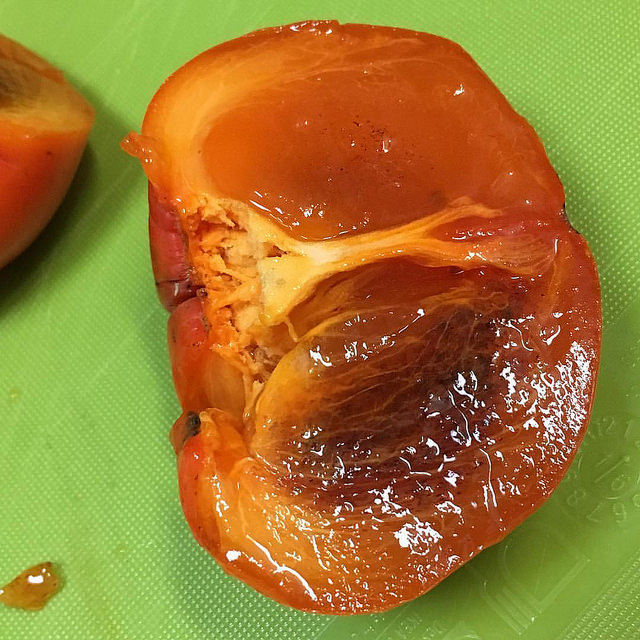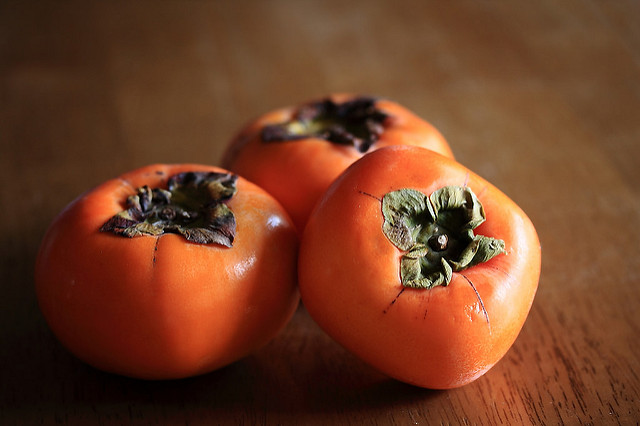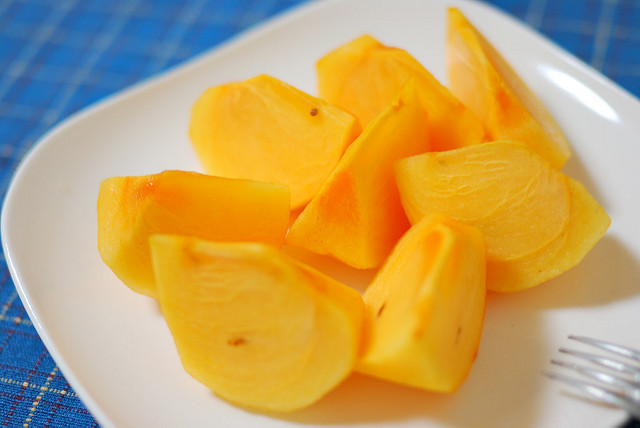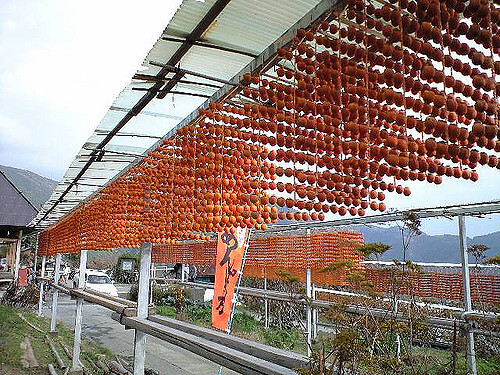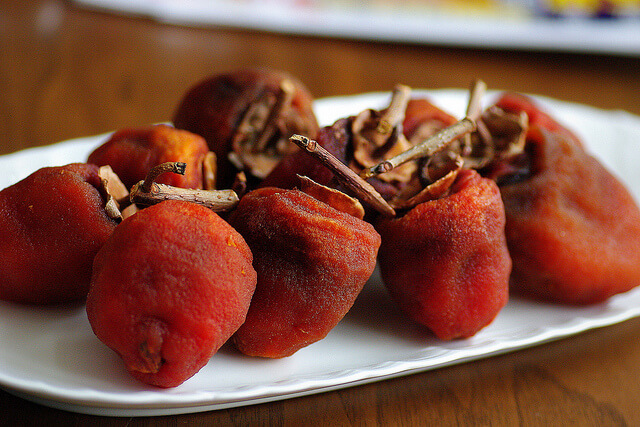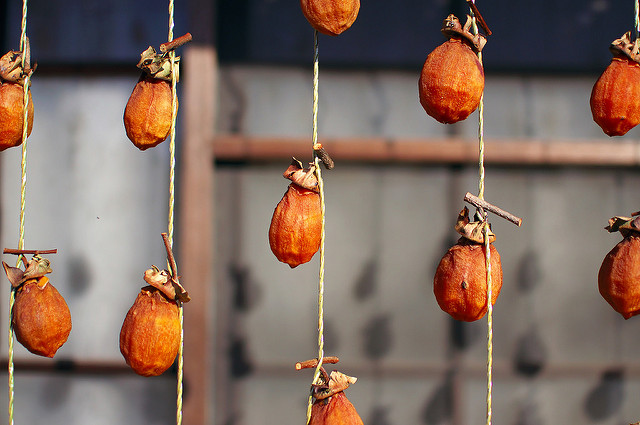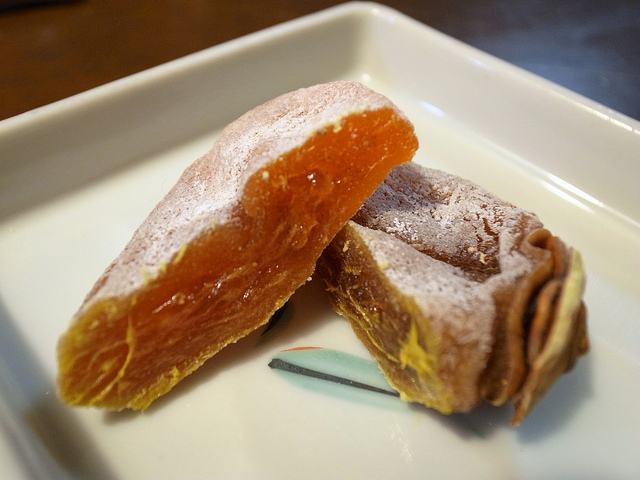
Japanese Persimmons - 7 Things You Might Not Know About Kaki, a Popular Autumn Fruit in Japan
Japanese persimmons or kaki are one of the most loved autumn fruits in Japan. Here are 7 things you might not know about this bright orange Japanese fruit, including their health benefits and why you should try it if you are visiting Japan in autumn!
This post may contain affiliate links. If you buy through them, we may earn a commission at no additional cost to you.
Persimmons are a popular autumn fruit in Japan. It is native to China, and spread to Korea and Japan more than 1,000 years ago.
Kuraken/Flickr1. Actually, they are quite nutritious.
You may think that persimmons must contain some vitamins since most fruits do. You are right. A persimmon contains a good amount of Vitamin A and C. Find out the nutrition facts about persimmons at this site:
An interesting substance that persimmons contain is called Zeaxanthin.
Zeaxanthin is a disease-fighting compound found in plant foods, usually found with lutein, another closely related phytochemical. The main function of these dietary carotenoids is to promote healthy eyesight, as explained in a monograph in the 2005 "Alternative Medicine Review."
According to the 2005 publication of "Alternative Medicine Review," persimmons offer approximately 0.8 milligrams per cup. Orange juice and tangerines are other natural food sources, offering .34 milligrams and 0.2 milligrams per cup, respectively.
livestrong.com
2. There are sweet (non-astringent) and astringent types.
You can roughly tell the type of a persimmon by its shape.
Shibugaki: Astringent persimmons
coniferconifer/FlickrAstringent persimmons are oblong and pointed at the end. They are usually dried to remove the astringency before eating.
Hitoshi Kobayashi/FlickrTo eat them raw, you need to wait until the fruit ripens completely to be jelly soft and the astringency is naturally gone.
Yukinori Iino/FlickrAmagaki: Sweet (non-astringent) persimmons
Takeshi Kawai/FlickrThis type is flatter in shape. They don't taste astringent, so they can be eaten raw while their flesh is still firm and crispy.
maaco/FlickrNon-astringent persimmon, which is native to Japan, is a mutation of the astringent type. The oldest of this sweet variety is called “Zenjimaru,” named after the temple where the tree was first found about 800 years ago.
Sweet persimmons are considered to be produced as a result of mutation. The first sweet persimmon in Japan was called "Zenjimaru", which was the breed coincidentally found at a temple in the Kamakura period in 1214.
Our Top Tips
Japan Shinkansen, Narita Express (N'EX) & Express Train Tickets
Plan ahead by booking your shinkansen, airport train, and express train tickets online in English. Have the tickets sent to you by mail or collect them at the station once you're in Japan.
3. Astringent persimmons are useful as hoshigaki (dried persimmons).
So, why grow and use astringent persimmons that need extra treatment when sweet ones are out there in abundance? Because they have special value as a dried product.
In autumn, if you take a walk in the Japanese countryside, you will see peeled astringent persimmons hung to dry in the sun. In the areas known for the production of hoshigaki, the scenery can be something like this. After being sun-dried, they are sweet and flavorful and have lost their astringency.
Go Imai/FlickrThe astringency comes from the tannin contained in the fruit. When the tannin is water soluble, it dissolves in saliva and your tongue tastes the terrible taste. Removing astringency is basically about making the soluble tannin insoluble by binding it with another substance, so your tongue does not feel the unwanted taste.
When an astringent persimmon is peeled and dried, the surface hardens to form a firm skin and "chokes" the fruit. That makes a substance called acetaldehyde in the fruit. Yes, it's what helps cause your hangovers after a hard night out. The tannin binds with it and then it does not dissolve in saliva any more.
pika1935/FlickrHoshigaki (dried persimmon) can be made with the sweet variety, too, but the astringent type is said to turn out much sweeter after being dried.
Now, here are some good things about hoshigaki.
Longer storage
vaboo.com/FlickrDried persimmons can keep longer than raw persimmons. They can be kept for weeks when kept in a cool, dark place and for months when frozen. Although vitamin C is lost during the drying process, the dried product is higher in calories. That is probably one reason why they were an important preserved food for winter season in the old days.
Important item in the traditional Japanese New Year’s decoration
Because hoshigaki is associated with good luck and longevity, it is often used as part of the New Year's decoration ornament with big rice cakes in Japan.
Useful in making wagashi, Japanese traditional sweets
Kazuhiko Kato/FlickrSince the drying condenses the sweetness, a dried persimmon is said to be 1.5 times sweeter than sugar. So in the old days when sugar was valuable, hoshigaki was a popular dessert. The white bloom you see in this photo is not a mold but sugar that rose to the surface of the dried fruit.
Because of the sweetness and flavor, dried persimmon is favored as an ingredient of certain wagashi. For example, this Kaki yokan (persimmon-flavored kanten jelly cake) could end up being too watery if raw persimmons are used.
But a more impressive fact is that the sweetness of hoshigaki is the traditional criteria for all kinds of wagashi sweets like these.
The traditional saying is that decent wagashi should not be sweeter than hoshigaki; anything sweeter is considered overwhelming and not sophisticated.
4. Astringency can be removed in several ways.
So, astringent persimmons become sweet after they are dried or overripened, but either way the texture of the raw persimmon is lost. In Japan, however, maybe because the sweet variety is available everywhere, people seem to have developed a love for the slightly soft but still crispy texture of the raw persimmons. They have come up with several methods for removing astringency while keeping the firm texture of the fruit.
Again, acetaldehyde is the key.
Treat with alcohol
Wet the top of astringent persimmons with distilled liquor (alcohol content of 35% or higher), store in a thick plastic bag, and keep in a warm place. The tannin bonds with the acetaldehyde made from the alcohol and becomes insoluble.
Treat with dry ice
Wrap some chunks of dry ice with newspaper, put them in a thick plastic bag with the astringent persimmons, let the air out, then close the top of the bag tightly. The carbon dioxide from the dry ice "chokes" the persimmons and produces acetaldehyde, thus turning the tannin insoluble.
Soak in hot water
In some regions blessed with hot springs, people soak the fruit in the hot water to remove astringency. It works in the same way as the dry ice method.
Freeze
Freezing the persimmon breaks up the tannin so that it can bond with another substance to become insoluble. Actually, this method does not keep the crispy texture of the fruit. When it is still frozen, the texture is more like sorbet, and when completely thawed, it will be very soft, more like the overripened one.
5. Leaves are useful, too.
Not only the fruit but the leaves are useful, too.
As tea
They say that persimmon leaves have some health benefit when used as tea.
Persimmon leaves are high in fiber and they contain tannins which can help digestion. They have properties than can help prevent high blood pressure and it is said that persimmon leaves have 30 times more vitamin C than oranges. They also possess pro-vitamin C which is not destroyed easily by heat, allowing the vitamin C to survive the brewing process.
specialtyproduce.com
As wrappers
Kuruman/FlickrThe leaves are said to have some antiseptic properties, so people in some regions use them to wrap sushi. Persimmon-leaf-wrapped sushi is the local specialty of the Nara, Wakayama, and Ishikawa prefectures.
6. Even the dried peels are useful.
In Japan, some people use dried persimmon peels to add a little sweetness and color to daikon radish pickles.
7. Helps you recover from hangover.
Perhaps, this is the most useful information for some of you, especially with the party season ahead?
As you know, when you have a hangover, it is the acetaldehyde that is giving you a hard time. So, here comes the theory of tannin-acetaldehyde bonding again.
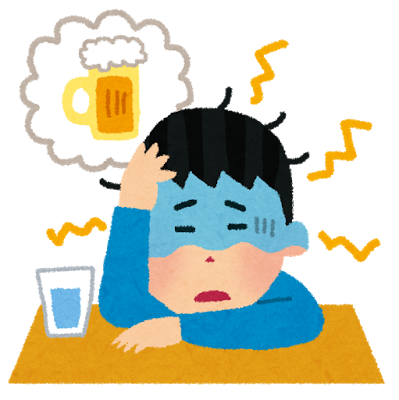
irasutoya.com
They say that by eating a persimmon, the tannin contained in the fruit will bond with the unwanted substance and help get it out of your body.
Now, we hope the information here will help you enjoy Japanese autumn and winter even more (with fewer worries about hangovers).
The information in this article is accurate at the time of publication.

